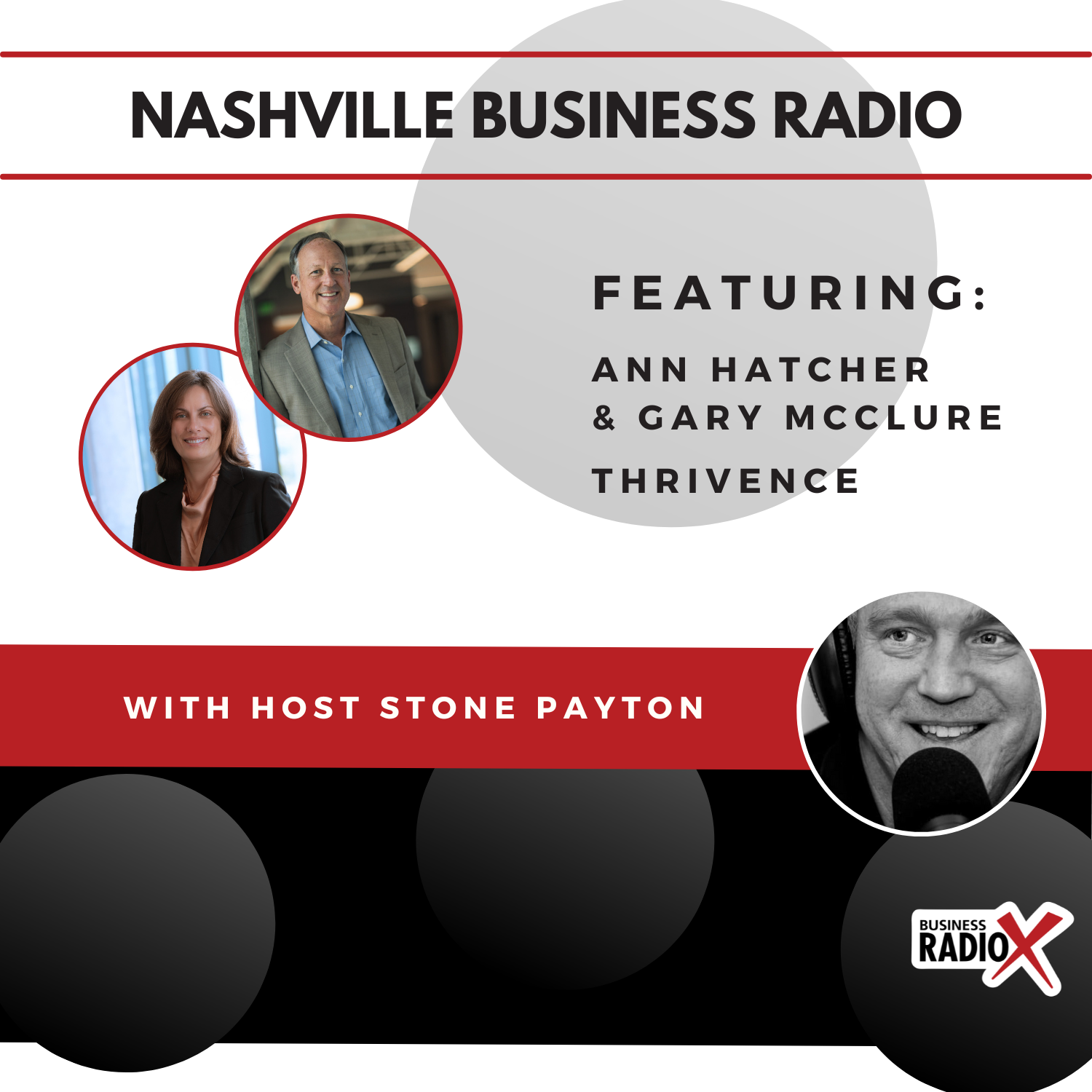5 Ways Companies Can Recruit and Win the Emerging Workforce

By Ann Hatcher, Thrivence Senior Consultant
The workforce is changing and the war for talent is growing increasingly competitive.
To compete, companies must keep up with trends and generational expectations to ensure they can recruit the best talent. And we should honor the workers who got us to where we are, and recognize their needs and expectations are changing too.
In order to win the future of the workforce, there are five key strategies companies should consider. In this blog post, we’ll explore those methods and how you can use them practically to recruit top talent and create a successful future for your organization.
I personally do not like “generational talk” because it separates us as humans. At the end of the day, we all share similar core desires. And our experience of the pandemic fundamentally shifted everyone’s needs in the workplace. So, we all win when our companies respond to the needs of the new workforce. In this post, we will take a look at what the research says about younger generations’ views on work, what they expect from any employer, and how you can win the future of the workforce.
1.) Focus on Ethical Business Practices
As the world continues to evolve, the workforce of the future will be shaped by the values and interests of younger generations. The importance of ethical business practices is becoming more apparent and a focus for many companies.
Younger generations have an acute focus on social justice. Every generation values social justice in one way or another, but due to social media and technology, younger generations express this publicly. Millennials may show emphasis on your mission and why you exist, Generation Z will expect to see social justice demonstrated in your company. If these values are not expressed through your product and your employment experience, they will find another employer that meets their expectations.
In order to recruit and win the future of the workforce, companies need to demonstrate that their organization is committed to ethical business practices. This means companies should strive for transparency, accountability, and integrity in all aspects of their operations. This includes committing to a code of ethics, providing fair wages, taking measures to reduce environmental impact, and prioritizing diversity and inclusion in their hiring and promotion practices. Building on the transparency value, understand that your employees talk about their compensation and benefit packages, the feedback and performance review ratings they receive, and who is getting promoted. Pressure-test your programs – and their application – to ensure you can stand up to the scrutiny.
By implementing these principles, companies can demonstrate to potential employees that they are dedicated to making a positive contribution to society – beyond the ESG report. Employees are looking for real action. This commitment will attract and retain the talent needed to build a strong and successful workforce in the years ahead. Additionally, the company’s ethical practices will set a good example for their current and future employees, helping to create a positive and collaborative culture within the organization.
At the end of the day, ethical business practices are essential for companies looking to recruit and win the future of the workforce. Companies must commit to making ethical considerations a priority if they want to be successful in today’s competitive landscape. Make sure employees believe your practices match your marketing.
2.) Build Transparency Into Your Leadership Practices
Transparency in leadership is increasingly important to employees and job seekers.
Generation Z is more transparent in every part of their lives, therefore they expect the same from their employers. A recent study shows trust in employers has eroded since the pandemic, and confusing return to the office policies aren’t helping. If you, the leader, don’t provide information, they will go looking for it elsewhere. Or what’s worse, they will fill their informational gaps with speculation. This rarely works out well for the organization.
In a world where news and opinions can spread quickly, it is critical for companies to be open and honest about their operations and strategies. Showing employees and potential recruits that you are a trustworthy and reliable organization will create loyalty and attract top talent.
Creating a transparent company culture should start at the top. Leaders must be willing to share information with the rest of the organization in an open, accessible way. This includes providing updates on the company’s progress, financials, goals, policies, and any other information that could be useful for employees to know to perform their best and feel secure. You will also build business acumen in your workforce. Transparency also means being open to feedback from employees, both positive and negative. Rather than discouraging conversations about tough subjects like social justice and politics, leaders should use these natural discussions as ways to train employees on how to be respectful in the workplace.
Managers may need training and executive support to learn how to handle transparent dialog. By emphasizing transparency, companies can create a better working environment and attract and retain more talented people.
3.) Speed Up Your Company Onboarding
When employees worked their way up the ladder and stayed at one company for 30 years, a 90-day onboarding plan was sufficient. Now it is normal for employees to change roles or companies every few years. While the above strategies will help you attract and retain employees better than your competitors, you are also wise to anticipate turnover.
The first week is the new 90 days.
You may not have your employees very long, and your most knowledgeable employees are retiring, so it’s best to activate new hires quickly.
Recruiting can be a costly endeavor, so it’s important to ensure that the onboarding process is just as effective in order to get the best results. A smooth onboarding process can help companies gain an edge on the competition by quickly getting their newly hired employees up to speed and equipped with the tools they need to succeed in their new role.
In today’s rapidly changing workforce, it’s important for employers to move quickly in order to stay competitive and win the future of the workforce. Here are five ways companies can speed up their onboarding program and get their new hires off to a great start:
- Set realistic expectations: It’s important to set realistic expectations for both the employee and the employer. Be honest about what the job requires, the timeframe in which you expect them to reach goals, and how you’ll support them along the way.
- Establish a timeline: Thoughtfully sequence onboarding activities and provide structure for the transition, minimizing downtime. This helps ensure that all of the important steps are taken care of quickly and efficiently. Have key meetings and events already on the calendar so they can quickly integrate into the rhythm of the business.
- Provide essential resources: Give new hires access to essential resources like job descriptions, company policies, and team contact information. This helps employees get up to speed faster and allows them to make more meaningful contributions from day one.
- Streamline your processes: Look for ways to streamline your onboarding processes. Automation tools such as electronic signature capture can help reduce paperwork and improve turnaround times. Consider initiating onboarding activities before the start date. This will have the added benefit of keeping the new hire engaged so they actually show up on day one.
- Get right to work: Your new employee wants to make an impact quickly. Assign a “buddy” who can work alongside them in their first few weeks as they actively get involved in real work.
By implementing these steps, companies can ensure a smoother onboarding process and help their new hires hit the ground running. With a streamlined process, employers can better win the future of the workforce and get their new hires up and running in no time.
4.) Connect the Employee to the Organization with Talent Magnets
When it comes to recruiting and winning the future of the workforce, it is important to create a connection between the employee and the organization. One of the best ways to do this is to honor their lives through total rewards programs.
Reward programs can provide employees with a sense of security and recognition for their hard work. By providing a range of benefits such as health insurance, retirement plans, paid time off, employee discounts, and more, organizations show their commitment to their employees and build strong connections. This not only helps to attract top talent, but also improves employee satisfaction, loyalty, and productivity.
Employees are increasingly looking for companies to offer leading edge benefits: extended parental paid time off, fertility and adoption support, flexible work schedules, accessible mental health care. By introducing well-thought out benefit programs into their employee value proposition strategies, companies can demonstrate that they value their employees and are committed to providing them with the support they need. With the right combination of benefits and incentives, organizations can create a wholistic approach and atmosphere that encourages employees to stay with the company for the long term.
Organizations must recognize that their employees are valuable members of their team and that offering meaningful and customizable benefits will lead to better retention rates and overall success. By connecting their employees to the organization through benefit programs, companies can establish loyalty and show that they truly care about their employees’ wellbeing.
5.) Establish Clear Expectations with a Performance Management System
Performance management is an essential part of any successful organization and one of the best ways to recruit and retain top talent. A strong performance management system allows organizations to reward employees for their achievements and identify areas of improvement, helping to ensure employees are being developed and supported.
Based on the data, pay will be more important than ever, and many states have passed pay transparency laws. Therefore, you will need to build transparency into your pay practices. These practices will need to be very clear and applied consistently across your organization. Your workforce will also look for clear answers for questions like:
- What are my goals?
- How will I be trained?
- What is my reward?
- How will I be measured?
Your performance management systems and feedback loops really need to focus on helping individuals get to the next level.
When it comes to performance management, seek a balance between recognizing the needs of the organization and respecting the individual. It’s important to set clear expectations for performance goals and provide feedback on both successes and areas of improvement. This allows employees to better understand how their efforts contribute to the success of the organization, as well as having the opportunity to discuss their needs with managers.
An effective performance management system should also provide consistent, timely feedback on performance. Regular check-ins with employees will allow them to track their progress, which in turn can lead to greater motivation and engagement in their work. Organizations can also provide recognition programs that reward employee accomplishments or even provide career development opportunities.
Finally, performance management should also focus on creating a positive work environment that encourages collaboration and innovation. A supportive workplace culture can help motivate and engage employees, making them feel valued and appreciated.
Performance management is an essential tool for companies looking to recruit and win the future of the workforce. Remember that your emerging workforce is looking for momentum in their careers. By creating a system that works for both the organization and individual, companies can ensure they’re taking the necessary steps toward retaining and developing their talent.
Need a Human Capital Strategy?
Connect with a Thrivence coach today. Services include:
- Human Capital Management
- Human Capital Strategy Development
- Human Capital Analytics
- Workforce Planning
- Recruitment and Retention Program Development
- Human Resources Functional Assessment and Design
About Ann Hatcher

Ann Hatcher is a Senior Consultant at Thrivence, based in Nashville, with more than 25 years’ experience in all areas of human capital. Ann joins Thrivence from the Chief HR Officer role at Wellpath, a $2B private-equity backed healthcare company contracting with state and local governments. At Wellpath, Ann built a scalable HR function to support company growth. Prior to Wellpath, Ann held multiple VP roles at HCA Healthcare, one of the nation’s largest publicly traded hospital companies. Learn more about Ann here.



